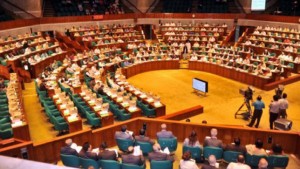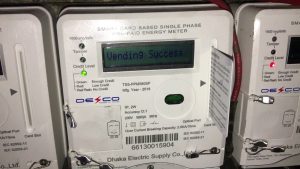Dr. Sadiq deserves credit for bringing out such a timely book, which not only celebrates the progress we have made so far but also alerts us to what to focus on in the coming years. Dr. Alamgir and Dr. Mujeri have shed lights on our development challenges and opportunities. In my view, these discussions are very relevant as we are entering a new phase of growth amid multiple transitions: from lower- to higher-middle income country, with increasing trade and financial integration and amid a difficult global environment. The resilience of our economy has been deeply linked to the equitable nature of our growth drivers – agriculture, labor-intensive manufacturing, and remittance. But as Dr. Sadiq reminds us, we cannot take this for granted. We need to put highest emphasis on ensuring growth with equity so that our growth continues longer, touching more lives.Our economy has been on a sustained 6 percent plus growth trajectory for more than a decade, with the lowest growth volatility in South Asia as well as many other emerging economies. The book has covered well our growth drivers, and the associated constraints, and supportive policies. Dr. Sadiq in the book skillfully identifies the reforms we need to upgrade our growth performance from 6+ to 8 percent, as envisaged in the 7th 5-Year Plan: by deepening our growth drivers, improving productivity through efficient resource utilization, and trade and investment liberalization. That is how we can create more and better jobs for our youth and further remove the curse of poverty from our society.
In line with the recommendations of the book, the government fully appreciates the need for significantly increasing investment – both private and public – and its efficiency as well. For that, easing infrastructure, energy and skill gaps, and efficient land use will be the key. The government’s decision to establish 10 economic zones in February this year and 100 such zones over the next 15 years is a
right move towards addressing the land problem. International financing is needed and welcome; our public external debt is at only 13 percent of GDP, providing ample room for financing. In addition, improving institutions will be important. We are revamping our institutions; for example, the government has recently decided to merge two government entities (Board of Investment, and Privatization Commission) to establish Bangladesh Investment Development Authority (BIDA) to promote and attract domestic and foreign investment.
Besides, our tech savvy growing middle class will help catalyze institutional reforms.
In the second half of the book, Dr. Sadiq presents the policies to improve equity. For a young country like ours, employment serves as a bridge between growth and equity. Human capital formation through
investing in health and education and social safety net policies is essential to promote a virtuous cycle of growth, poverty reduction and equity. From our side, along with macroeconomic and financial stability, Bangladesh Bank is trying its best to accelerate inclusive growth by improving financial intermediation efficiency and supporting credit facilities in agricultural, SME, environment-friendly and other productive sectors. The good news is the Bangladesh economy has crossed important thresholds: i) one of the largest frontier economies (a lower-middle income country since 2015); ii) a $200 billion+ GDP, larger than in Vietnam and ten times of that in Cambodia; iii) a domestic financial system of around $150 billon; iv) savings rate at around 30 percent of GDP and on the rise; v) our tech-savvy and brand-aware middle and affluent class, with a family income of $5000+, will triple to 34 million in a decade; vi) a deep competitiveness buffer (a labour force of 80 million; with productivity-adjusted labor costs lower than in regional peers such as Cambodia and Vietnam); vii) our latest economic census shows growth is broad-based in urban and rural centres, with SMEs playing an important role. Moreover, more and betters jobs, including self-employment, are being created not only in the urban centers but also in rural non-farm sectors, as evidenced by significant increase in real rural wages in recent years.
Despite some still lingering infrastructural constraints we are working hard to address most of the needs of the investors.
As a result, big investors, local and foreign, are queuing up in hundreds, and we are also grooming small SME investors in millions; lining up policy facilitation and market development support for all investors, large and small. None of our emerging markets neighbors are having the kind of both export led and domestic demand led growth that we are undergoing. We thus have solid ground for your robust optimism; this optimism will impel proactively in rapid overcoming of the remaining infrastructural deficiencies.
There has also been a significant uptake in the imports of capital machineries during last six months (29 percent increase in L/C opening) and decline in food imports. Total exports also increased around 8 percent during this period and total imports accounted 5 percent growth. As a result, there has been a consistent current account surplus. The FDI is also projected to be around USD 2 billion during 2015. All these indicate buoyancy in the investment scenario of Bangladesh, and hence there is no reason to forecast a gloomy projection.
Dr. Sadiq, BIBM and PRI deserve to be congratulated for the book. This publication would generate thoughtful discussions on the new generation of reforms and their implementation among our policymakers, academia, development professionals and civil society organizations.
Finance Minister Mr. Abul Maal Abdul Muhith was the chief guest, former Finance Minister Mr. M. Syeduzzaman; Advisers to the Prime Minister Mr. H T Imam and Dr. Mashiur Rahman; Vice Chairman of PRI and author of book Dr. Sadiq Ahmed; Dr. Mustafa K Mujeri, Dr. Mohiuddin Alamgir, Dr. Ahsan Mansur, distinguished development professionals and academics were present.
(Bangladesh Bank Governor Dr. Atiur Rahman’s abridged statement made at the launch of ‘GROWTH WITH EQUITY: Contemporary Development Challenges of Bangladesh’ by Dr. Sadiq Ahmed)




